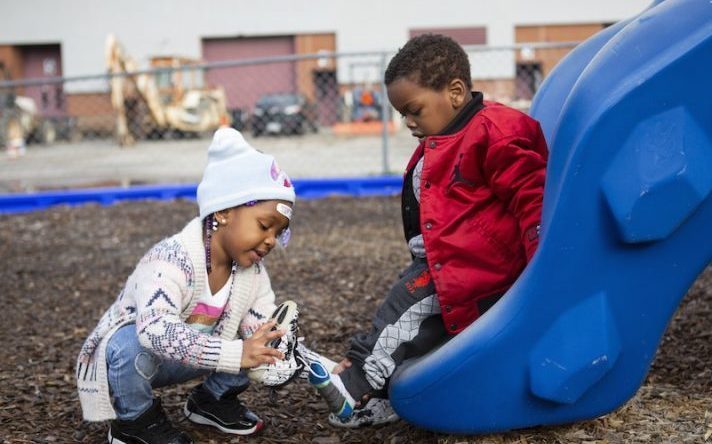RELATE
Fostering Empathy
Showing empathy means imagining how someone else is feeling and responding with care or kindness

At a Glance
As preschoolers start to develop empathy, they first need a basic understanding of emotions. Then, they will begin to understand that everyone has needs and that those needs may (and often are!) different from their own. As their understanding grows, they can help to meet other’s needs. You can support this development by prompting children to consider the abilities, needs, feelings, and perspectives of others and by giving them the opportunity to provide care to others in meaningful ways.
What It Looks Like
A quick glance at ways you can help preschoolers understand and develop empathy for others
Talk About Feelings
Prompting children to think about emotions supports their growing understanding that people, including themselves, have various needs and feelings.
Recognize Acts of Kindness
Acknowledging children’s acts of kindness is a great way to have children link their actions to how they may impact others in positive ways.
Highlight Care During Play
Focus children’s attention on the ways they take care of others. Encouragement like this supports their development of empathy.

TEACHING THROUGH BOOKS
Creating Windows and Mirrors
Through books, young children can gain a window into the world and minds of others. Use award-winning author Grace Lin’s TedX Talk and our guiding questions to explore how books provide children with a window into the larger world, as well as a mirror for self-reflection. We’ve also featured many great books to start with!
TRAUMA-INFORMED CARE
Empathy and Racial Trauma
Use this educator’s guide from The National Child Traumatic Stress Network that lays out how to address racial trauma in the classroom, including how you can model empathy when you address racial trauma.
FAMILY CONNECTION
Modeling Empathy at Home
Written by Amanda Morin for Understood.org, this blog is a great introduction for parents on what empathy is, how children learn this important skill, and how parents can model it at home.
Activity Cards for Preschool Classrooms
Part of the STREAMin3 curriculum, these activity cards provide simple and fun ways you can prompt children to consider the perspective of others and provide care


Is It Fair? Is It True?
Use puppets, books, or quick scenarios to discuss issues of fairness with children.

Positive Notes
Encourage children to think about who they are grateful for and have them write positive notes.

Practice Gratitude
A focus on gratitude helps young children form and strengthen supportive relationships.
Get Our Resource Guide
Includes questions and activities to guide your use of the videos, book suggestions, and activity cards featured for each of the Core Skills

